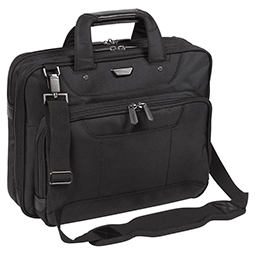It makes little sense to separate us from devices at only some airports
- News Feed
- Thursday, 27 April 2017
Philip Baum, author of ‘Violence in the Skies: a history of aircraft hijacking and bombing’ queries the recent USA and UK bans on laptops and other electronic items on certain routes ...
IT is public knowledge that the device that detonated on board Daallo Airlines flight 159 in February 2016 was concealed within a laptop and was probably activated by a passenger who had been given the device by an airport 'insider' after he had gone through the screening checkpoint at Mogadishu Airport.
However, the recent restrictions introduced by the United States and United Kingdom governments on the carriage of personal electronic devices (PEDs) including laptops on flights from certain states defy common sense.
 Our aviation security system has to be designed in such a way as to identify future attack scenarios and there are numerous reasons why flights might be safer if a modified laptop containing an IED is in checked luggage rather than carry-on: For example, the passenger is not able to initiate the device using a traditional control mechanism, the device is less likely to find itself next to the aircraftís fuselage and, therefore, any blast may be absorbed by the surrounding baggage and cargo.
Our aviation security system has to be designed in such a way as to identify future attack scenarios and there are numerous reasons why flights might be safer if a modified laptop containing an IED is in checked luggage rather than carry-on: For example, the passenger is not able to initiate the device using a traditional control mechanism, the device is less likely to find itself next to the aircraftís fuselage and, therefore, any blast may be absorbed by the surrounding baggage and cargo.
Yet surely we need to ensure no such device makes it onto the aircraft at all?
Many of the departure points impacted by the latest restrictions are transportation hubs for onward connections to (and, more pertinently, from) places such as Somalia. But there are numerous other routes to the US and UK and, if the supposed device can be initiated by a suicide bomber, then they can also travel from Istanbul, Doha or wherever, via other European, African or Middle Eastern cities not on the list.
Equally, sophisticated bombs can remain undetected; printer toner cartridge bombs were not detected in the UK by a multitude of screening technologies, including explosive trace detection, and it was only when a diligent Emirati security officer screening the device sent via Dubai opted not to rely on technology and took the printer apart that the devices were identified. The mere presence of explosive detection technology does not necessarily equal the guaranteed detection of improvised explosive devices (IEDs).
There would be greater logic in restricting all cabin baggage on all routes or even ceasing operations to all airports of concern; after all, the restrictions do not address the insider threat at these airports, nor the potential for home-grown terrorists manufacturing similar devices in the US or UK and boarding flights with them.
These restrictions - whether they work or not - still enable terrorists to disrupt our daily lives.
There also are practical considerations. The potential for flight delays and disgruntled passengers is significant and many may opt not to fly at all.
The 'laptop et al' restrictions mean we have opted to disconnect passengers from their electronic items, making hand-search all the more difficult and the analysis of such items in the presence of their owner (comparing the item to the appearance and behaviour of the passenger) nigh on impossible.










